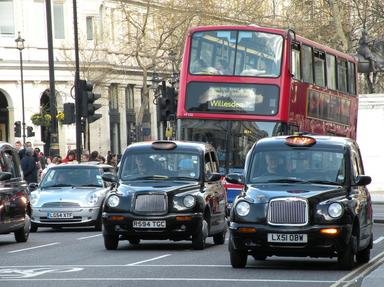Quiz Answer Key and Fun Facts
1. A: 1970-76: Which small four door saloon was introduced by Hillman to compete with the very successful Ford Escort?
2. B: 1919-Present: Which famous racing marque, that produced some of the most powerful road-going cars of the 1920s and 30s, is famed for producing luxury Grand Tourers and fast sports saloons?
3. C: 1962-1982: Which medium-sized family saloon was to become the best-selling car in the UK during the 1970s?
4. D: 1972-1980: Which sports saloon was one of the more successful British Leyland products, being the first ever mainstream car to have four valves per cylinder and the first British car to offer alloy wheels as standard?
5. E: 1968-2002: Which small family saloon, later a hatchback, was the best-selling car in Britain throughout the 1980s and 90s, as well as being very successful on the rallying circuit? Just give the name of the model, not the manufacturer.
6. F: 1997-Present: Which Land Rover model was one of the first cars to offer a compromise between off-road ability, streamlined looks and comfortable day-to-day road use?
7. G: 1972-1985: Which executive saloon by Ford became famous as the main vehicle used by Scotland Yard's Flying Squad in the TV cop series, 'The Sweeney'?
8. H: 1959-1971: The popular Triumph Herald was replaced by the Triumph Toledo.
9. I: 1963-1976: Which small, two door saloon was the only British-designed competitor to the Mini during the 1960s?
10. J: 1966-1976: Which company built a luxury Grand Tourer called the Interceptor?
11. K: 1954-1956: The badge for Kieft Cars showed a red dragon because they were built in Wales.
12. L: 1952-Present: Which car company is based in Norfolk and was founded by Colin Chapman?
13. M: 1959-2000: Which revolutionary auto design by Alec Issigonis became a 1960s style icon?
14. N: 1998-Present: Which company makes the M400, a car that can reportedly achieve 0-60mph in less than 3 seconds?
15. O: 1913-1971: Which long-running series of large family saloons was named after the home town of its company's founder, William Morris?
16. P: 1959-1961: Which Ford design was a two door version of its Prefect saloon?
17. Q: 1967-1968: The Quasar-Unipower was wider than it was long.
18. R: 1952-2002: Which company was famous for producing lightweight, three-wheeled cars?
19. S: 1970-1977: Which 3-litre sports tourer was only produced as a convertible?
20. T: 1975-1981: The TR7 was the last sports car built by Triumph.
21. U: 1997-present: Which company built the Spyder sports car?
22. V: 1963-1979: Which car was Vauxhall's first foray into the small car market?
23. W: 1961-1969: Which famous old company, more associated with sporty saloons, produced the diminutive Hornet?
24. X: 1968-Present: Which long-running series of Jaguar cars is their luxury saloon model?
25. Z: 1955-1972: Which large Ford saloon was a luxury version of the Zephyr?
Source: Author
Plumbus
This quiz was reviewed by FunTrivia editor
stedman before going online.
Any errors found in FunTrivia content are routinely corrected through our feedback system.

